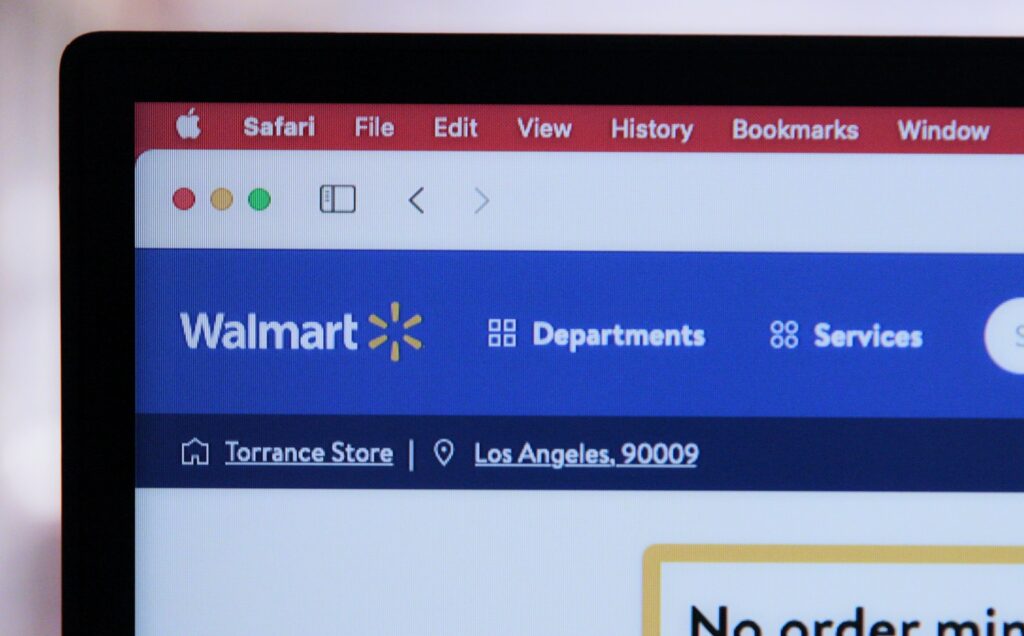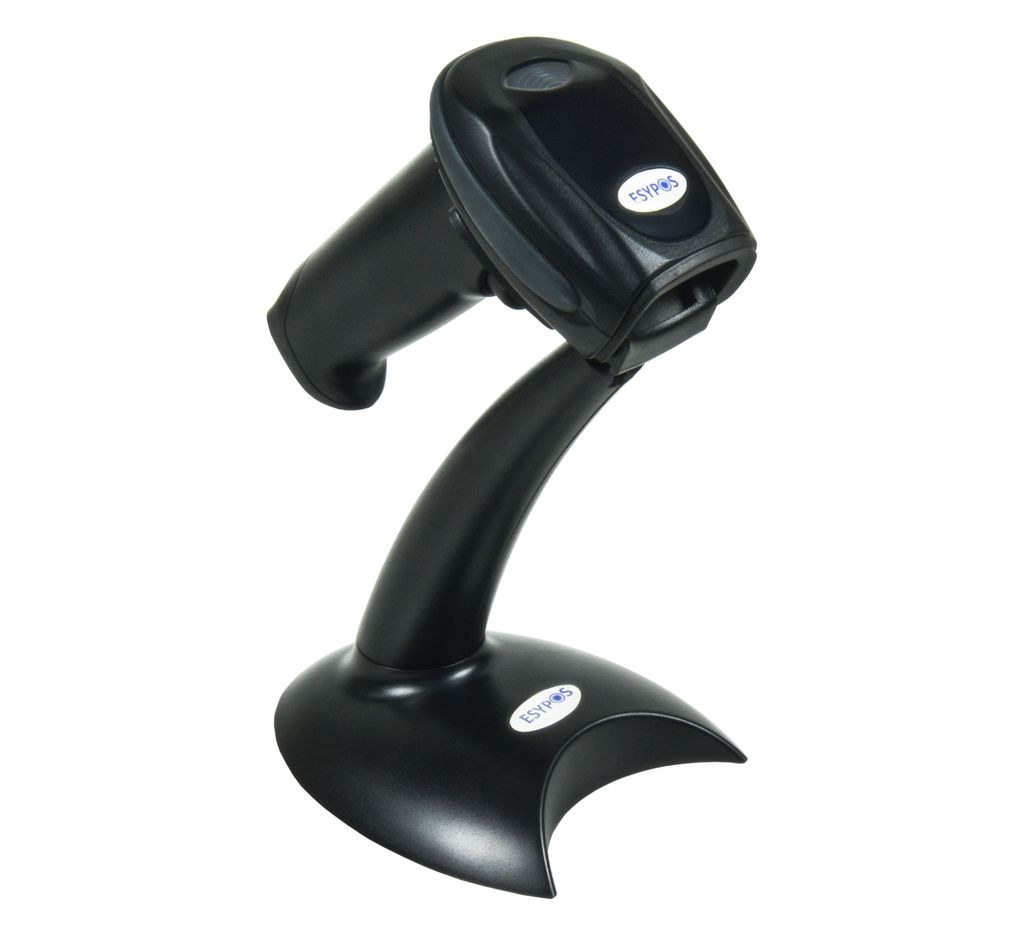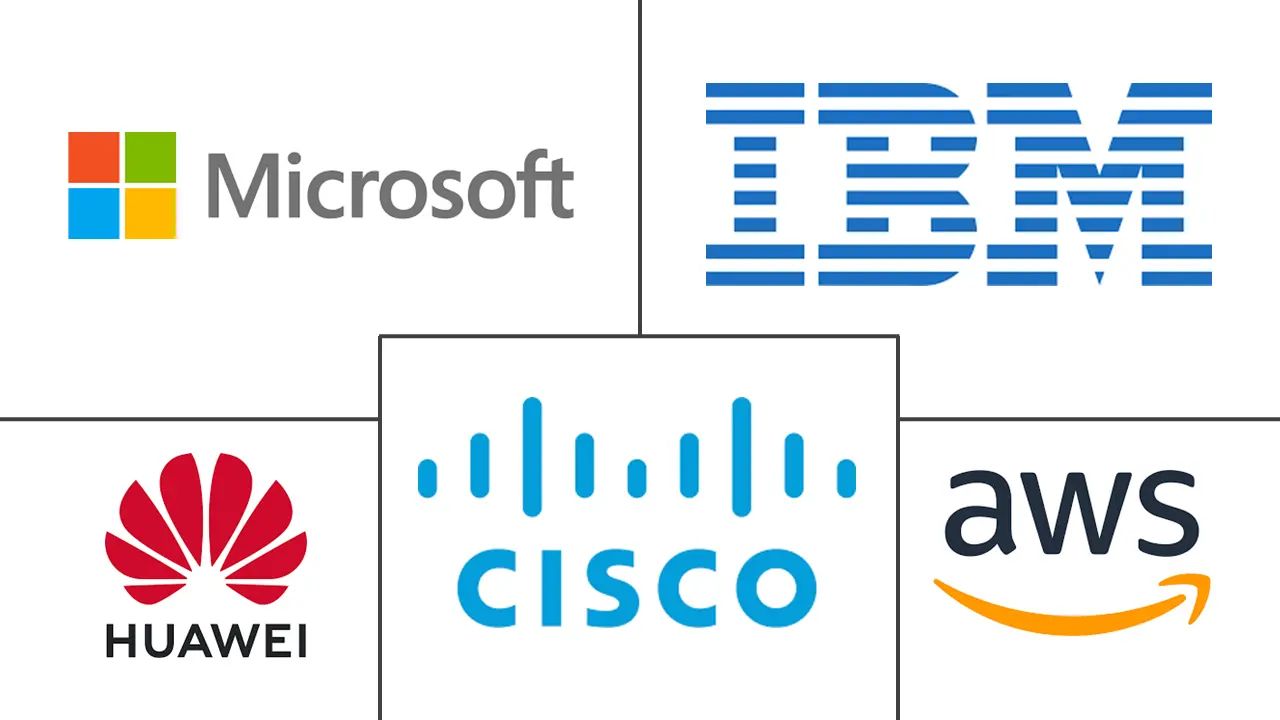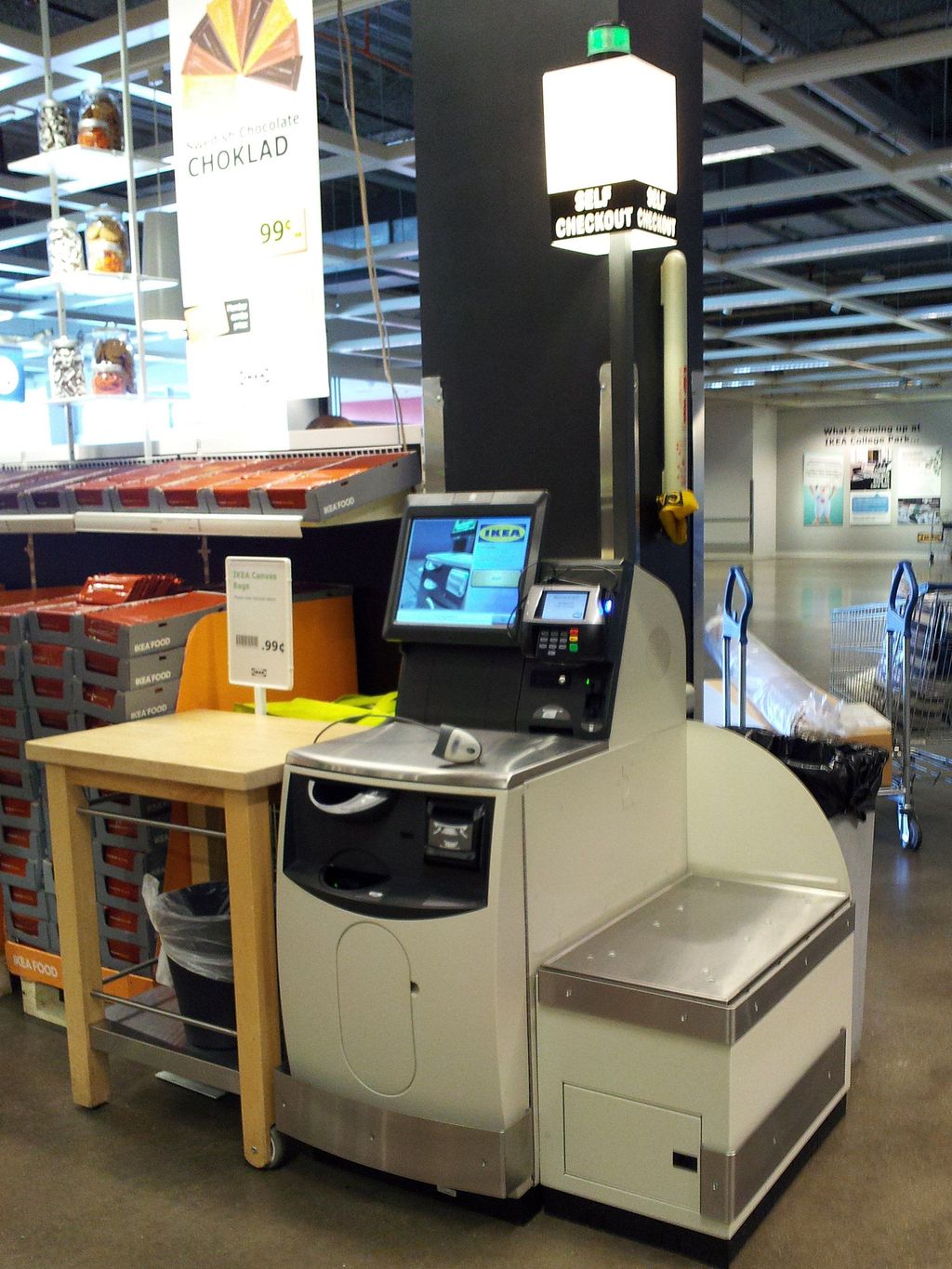
In an era when artificial intelligence is rapidly reshaping industries across the globe, Walmart, a titan in the retail world, is not merely adopting new technologies—it is actively forging a new path. This is not just about incremental improvements; it is a profound digital transformation on a large scale, impacting everything from back-of-store operations to the very freshness of the produce nestled in your shopping cart. The vision is clear: leverage cutting-edge AI to enhance efficiency, empower workers, and ultimately deliver a superior customer experience, proving that the future of retail has arrived, and it is smarter than ever before.
One of the most compelling narratives in Walmart’s AI journey addresses a challenge that has plagued retailers for generations: perishable goods. Stores like Walmart and Costco have long grappled with the disheartening sight of “humongous quantities of food, clothes, beverages, and other items rotting in front of their eyes.” This not only results in significant financial losses for warehouses and stores but also represents a staggering amount of waste. Walmart, however, is tackling this head-on with an ingenious, AI-driven solution.
The core of this innovation lies in new AI-driven scanners designed to provide store employees with real-time, actionable insights into product conditions, especially for sensitive items like fruits. Imagine a device that instantly informs associates when fruits, such as bananas, are on the verge of spoiling, prompting them to sell them before they rot. This precision extends beyond the produce aisle; the technology also advises workers on the optimal time to initiate apparel sales, a critical capability given the sudden shifts in fashion trends.

This revolutionary AI tool eliminates the guesswork in crucial decisions for associates. As Swati Kirti, Senior Director of Data Science at Walmart International Tech, eloquently puts it, “This AI tool essentially assists associates in offloading the decision – making process and enables them to know precisely what to do with that product at that specific time.” Beyond indicating ripeness or fashion urgency, the device also offers recommendations on whether products require a price adjustment or even a complete replacement due to deteriorating quality, and it issues warnings if items need to be returned to the vendor. All this is accomplished through a specialized scanner that effortlessly captures and processes relevant details from each item.
The potential impact on waste reduction is monumental. Consider the fashion industry: if AI can conduct mid – season quality checks on clothing, the enormous problem of cloth wastage can be dramatically reduced, which directly translates into significant cost savings. Walmart’s versatile scanner is designed to be applied across all store items, making it a comprehensive waste management solution. Currently in its testing phase, this AI – driven program is set to undergo trials in Canada, with aspirations for a broader international rollout.
The statistics underscore the urgency of such innovations. Recycle Track Systems reports that the U.S. alone discards approximately 60 million tons of food annually, accounting for about 40% of the nation’s total food supply. Walmart’s own data reveals a substantial contribution to this issue, with the company wasting around 3.5 million tons of food in 2018 alone. The strategic importance of this new tool is championed by Sravana Karnati, Senior VP and CTO for Walmart International Technology, Walmart Global Tech, who states, “Using tools like our AI – powered waste management system helps reduce our environmental footprint, requiring fewer societal resources and, at the same time, helping to reduce our own operating costs.”
Product on Amazon: Inateck Barcode Scanner Bluetooth with AI, 1D Scanner Wireless, Handheld Scanner with APP and SDK, 1 Charge 180 Days Standby, 35m Range, Automatic Fast and Precise scanning, BCST-70 AI
Brand: Visit the Inateck Store
Price: 69.99 USD
Rating: 4.4 Total reviews: 1044
Compatible Devices: POS, Windows, iOS, Mac OS, Android
Power Source: Battery Powered
Connectivity Technology: Bluetooth
Number of Batteries: 1 Lithium Ion batteries required. (included)
Features:
1. Strong Recognition Ability: Can read various types of 1D barcode. Supports lightning scanning and upload of blurry or broken barcodes under strong and dim light
2. Innovative AI Features: Easily interact with Inateck AI for quick barcode scanner configuration and data processing. Solve complex data tasks in seconds with more customization options, faster and simpler than ever
3. Easy to Deploy: Out of the box. Connection completes in 3 seconds. Supports English, German, French, Italian, and Spanish keyboard. Compatible with POS, iOS, Android, Windows, Mac OS, Linux, and Raspberry Pi
4. Prolonged Battery Life and Connection Distance: Full charge allows 180 days Standby. Less downtime, no shift interruptions. Connection distance reaches above 35 meters
5. Built to Last: External TPU protective case is 2 times as thick as similar products. Triple consolidation treatment is made for internal core parts. Withstands repeated 6ft. (1.8m) drops to concrete floor
Top Review from US: “This is a very well made and robust device. It came shipped and packaged in a sturdy box and the instructions are written in grammatically correct English so right off the bat I was pleasantly surprised by the quality of the product, packaging and instructions. Seriously, I can’t stress how common it is to receive instructions that are barely comprehensible from out of the country manufacturers so getting something for a technical device that had instructions that I could actually understand was a huge plus especially when you may need to change settings. The device can be changed from its default settings by using bar codes that are in the instruction manual… just point and click. Pretty ingenious really. The USB transmitter works great in a plug-and-play capability into my Windows 10 computer and then immediately communicating to the handheld bar code reader. The wireless capability is nice although it also came with a USB cable for charging the reader’s internal batteries or… …”
Shopping on Amazon >>
Read more about: Diving Into the Digital: Crafting Lucy’s Cyberpunk Saga

Beyond food, the waste crisis extends to apparel, with Americans discarding approximately 11.3 million tons of clothes annually. Walmart is addressing this through its “Take Back” program, which enables customers to return old clothes for recycling. This initiative channels returned items directly to the Walmart Foundation, which collaborates with Goodwill to facilitate the recycling process, demonstrating a holistic approach to sustainability. Retail giants such as Amazon, Walmart, and Target are actively redesigning their packaging to minimize waste, exhibiting a collective commitment to environmental stewardship. Homer Swei, Senior Vice President of the nonprofit Environmental Working Group (EWG), aptly summarizes this collective responsibility: “Retailers possess tremendous power to minimize their own environmental footprint, as well as that of the brands in their supply chains, and to contribute positively to the planet.”
Walmart’s adoption of AI extends far beyond the realm of barcode scanners and waste management. The company has a long – standing history of embracing new technologies and driving transformative change, a characteristic crucial for maintaining its position as the world’s largest retailer. This forward – thinking mindset, which rejects the “this is how we’ve always done it” attitude, offers invaluable lessons for organizations across all sectors. Walmart serves as a case study in how to strategically integrate generative AI, not just as a novelty, but as a core driver of performance and enhanced customer service across its vast global operations.
Imagine a shopping experience where convenience takes precedence. Walmart is turning this into a reality by integrating generative AI directly into the customer journey. For frequently purchased items, such as groceries, Walmart has introduced voice shopping through its Walmart Voice Order service. Customers can easily connect their mobile devices and home smart speakers to their Walmart accounts, enabling them to reorder common items with a simple voice command. For instance, a customer can say, “Hey Google, please add a dozen eggs to my cart,” and the system intelligently identifies their preferred brand from past purchases and adds the item. It’s a seamless fusion of technology and everyday convenience, truly remarkable.
The innovations continue with the Text to Shop feature, which allows customers to interact with Walmart through simple text messages. Powered by conversational AI, this feature enables shoppers to search for items, modify their carts by adding or removing products, reorder past purchases, and even schedule deliveries or pickups. This intuitive chat – based interface streamlines the entire shopping process, making it more accessible and efficient for a diverse customer base.
Read more about: Beyond the Veil: Unearthing 13 Highly Intriguing Forbidden Destinations

To further enhance the online shopping experience, Walmart is launching a new AI shopping assistant. This intelligent tool is devised to assist shoppers in identifying the perfect products tailored to their specific needs or even meticulously planning an entire event. Whether you are assigned the task of organizing a superhero – themed birthday party for a six – year – old or searching for a unique Halloween costume for a teenager, this AI assistant offers relevant and pertinent product recommendations, obviating the need for multiple, fragmented searches. It transforms product discovery into a personalized and intuitive process.
It is not merely customers who are reaping the benefits of Walmart’s generative AI initiatives; in – store associates are also undergoing a transformative shift. The introduction of “Ask Sam”, a conversational AI assistant, has revolutionized the way colleagues access information and manage their daily tasks. This intelligent helper can handle a wide range of queries, from locating a specific product within the expansive store layout to looking up prices or even answering questions about an employee’s work schedule. The charm of Ask Sam lies in its simplicity; associates can pose questions naturally, such as “In which aisle is cinnamon located?”, and receive immediate and accurate responses.
Customer service, often a source of friction for consumers, is also being reimagined through generative AI. While many of us are acquainted with the frustrations of dealing with conventional chatbots, generative AI enhances their capabilities by enabling them to interpret and respond to requests with a far greater degree of intelligence and human – like comprehension. This advanced functionality is the reason why major companies, including Walmart, are harnessing generative AI to automate numerous customer support requests. Since 2020, this technology has demonstrably reduced millions of customer contacts by instantly providing precise answers to common questions about returns, order statuses, and more. This real – time conversational functionality is available across a broad international scope, covering the US, Canada, Mexico, Chile, and India.
Perhaps one of the most fascinating and strategically impactful applications of AI at Walmart lies in automating supplier negotiations. The company has successfully trialed a generative AI chatbot specifically designed to finalize deals with suppliers of essential store equipment, such as shopping carts. Out of 89 targeted vendors, the chatbot successfully closed deals with an impressive 64 percent, resulting in an average of 1.5 percent in cost savings and an additional 35 days in extended payment terms. Remarkably, 83 percent of suppliers expressed satisfaction with the chatbot negotiation, demonstrating that automated negotiations can not only secure better terms but also foster positive vendor experiences.
Product on Amazon: Reclaimed Quilts, Sew Modern Clothing & Accessories from Vintage Textiles
Price: 29.95 USD
Rating: 4.2 Total reviews: 8
Top Review from US: “This book is amazing! It’s full of so many useful helpful tips and tricks in addition to the patterns. I bought the book for patterns and I got SO much more. The book is laid out in a very easy to ready and appealing format. I’m so glad I purchased this book.”
Shopping on Amazon >>
Read more about: 8 Unforgettable Train Trips Across America That Promise Breathtaking Views and Epic Adventures

In a testament to its innovative spirit, Walmart is also enabling its corporate employees to actively engage in the AI revolution. The company has provided its generative AI tool, “My Assistant,” to employees working in corporate facilities. The underlying philosophy is to relieve employees of the burden of “monotonous, repetitive tasks,” thereby allowing them to allocate more time and attention to enhancing the customer experience. It is expected that employees will, in turn, discover and propose their own practical and creative applications for the tool in their daily work. This effectively represents a brilliant crowdsourcing strategy, leveraging the collective ingenuity of its vast workforce to uncover novel uses for generative AI.
At the very core of Walmart’s digital transformation lies a sophisticated interplay among cutting-edge technologies. Central to this evolution are AI-powered barcode scanners, which have become indispensable for efficient inventory management, streamlined checkout processes, and overall operational excellence. This transformation is deeply rooted in the synergy of 5G connectivity, edge computing, and artificial intelligence, which work in tandem to enhance barcode scanning capabilities and enable seamless, real-time data flow across Walmart’s expansive network of stores. The deployment of these advanced scanners exemplifies Walmart’s commitment to harnessing the latest innovations for improved efficiency, accuracy, customer service, and sustained competitiveness.
Barcode scanners have long played a pivotal role in retail, ensuring accurate pricing, tracking product movement, and updating inventory systems. However, traditional scanners have limitations, especially in high-volume environments like Walmart’s bustling stores. They often have difficulty with poorly printed, damaged, or obscured barcodes and may fall short in fast-paced scenarios such as busy checkout lanes or on rapidly moving conveyor belts. Recognizing these inherent challenges, Walmart has proactively endeavored to overcome them through the adoption of more advanced, AI-powered scanning solutions.
Product on Amazon: Practical Generative AI with ChatGPT: Unleash your prompt engineering potential with OpenAI technologies for productivity and creativity
Price: 31.49 USD
Rating: 4.9 Total reviews: 13
Top Review from US: “I concur with the early reviewers of “Practical Generative AI with ChatGPT” and highly recommend this book for Generative AI (GenAI) users, especially those who use ChatGPT.As an academic who is a GenAI user but not a data scientist or software developer, I felt this book was a necessity for the “mere mortals” who seek to improve their output performance across disciplines. For me, the key benefits of the text included:1. The breadth of information (e.g., generation of social media posts, research summaries, and creative images). I agree with the back cover note that “By the end of this book, you’ll be well equipped to leverage OpenAI’s technology for competitive advantage.”2. The focus of the book on prompt engineering instead of Python coding is a big plus for readers who are not programmers. Eventually, GenAI will diffuse in the workplace through the prompt engineering skills of employees. Not too many books (I have about 10 on the subject of GenAI) take this angle.3. The author,… …”
Shopping on Amazon >>
Read more about: Decoding the Unprecedented Bond Market Turmoil and What It Means for Your Money

This need for advanced scanning technology is of utmost importance for Walmart, considering its massive global presence. Sustaining real – time data accuracy within its inventory management system is of critical significance; any discrepancies may result in costly stockouts, overstocking, or missed sales opportunities. AI – powered barcode scanners signify a substantial leap forward in addressing these issues. Endowed with sophisticated machine – learning algorithms, these scanners are capable of interpreting and decoding barcodes with remarkable accuracy and speed, even under challenging circumstances. Whether the barcode is faded, damaged, or moving at high speed on a conveyor belt, AI – powered scanners offer a level of precision and reliability that far surpasses that of their traditional predecessors.
5G technology assumes a transformative role in boosting Walmart’s barcode scanning processes. As the fifth generation of mobile networking, 5G provides significantly faster speeds, considerably lower latency, and substantially higher bandwidth in comparison to previous wireless technologies. These characteristics are indispensable in a retail environment where instantaneous data transmission is vital for maintaining inventory accuracy and ensuring seamless checkout operations. For Walmart, the integration of 5G networks implies that its AI – powered barcode scanners can transmit data almost instantaneously.
Consider a self – checkout scenario: when a customer scans an item, the AI – powered scanner promptly sends data to the cloud or a local edge server. There, inventory levels and pricing data are updated in real time. The low latency and high bandwidth of 5G ensure that the communication between scanners and the central database is seamless, keeping Walmart’s systems consistently up – to – date and accurate. Moreover, 5G connectivity enables faster communication across Walmart’s entire store network, meaning that an inventory update in one location can be reflected almost instantaneously across all Walmart stores, facilitating dynamic responses to stock changes, especially for high – demand items or promotional adjustments.
Product on Amazon: Inateck 2D Barcode Scanner, Wireless Bluetooth QR Code Scanner with AI APP & SDK, 180-Day Battery Life, Fast & Accurate Scanning, Compatible with iOS/Android/Windows, BCST-72
Brand: Visit the Inateck Store
Price: 89.99 USD
Rating: 4.4 Total reviews: 1044
Compatible Devices: Laptop, Desktop, Tablet, Smartphone
Power Source: Battery Powered
Connectivity Technology: Bluetooth, 2.4G Wireless, USB Cable
Number of Batteries: 1 Lithium Ion batteries required. (included)
Top Review from US: “This is a very well made and robust device. It came shipped and packaged in a sturdy box and the instructions are written in grammatically correct English so right off the bat I was pleasantly surprised by the quality of the product, packaging and instructions. Seriously, I can’t stress how common it is to receive instructions that are barely comprehensible from out of the country manufacturers so getting something for a technical device that had instructions that I could actually understand was a huge plus especially when you may need to change settings. The device can be changed from its default settings by using bar codes that are in the instruction manual… just point and click. Pretty ingenious really. The USB transmitter works great in a plug-and-play capability into my Windows 10 computer and then immediately communicating to the handheld bar code reader. The wireless capability is nice although it also came with a USB cable for charging the reader’s internal batteries or… …”
Shopping on Amazon >>
Read more about: Retail Giants Rethink Checkout: The Evolving Story of Walmart and Self-Service

Edge computing forms another critical pillar of Walmart’s advanced barcode scanning solution. This approach involves processing data closer to its point of origin, rather than exclusively relying on distant, centralized cloud servers. By shifting processing to the ‘edge’ of the network, data can be analyzed more rapidly, significantly reducing latency and minimizing the volume of data transmitted over the network. This is particularly vital in retail settings where real-time decision-making directly impacts efficiency and customer satisfaction.
Within Walmart’s ecosystem, edge computing is seamlessly integrated with its AI-powered barcode scanners to enable rapid, localized data processing. When a customer scans an item, for example, the barcode data is first processed on a local edge device. This device performs immediate checks for errors, verifies pricing, and updates inventory levels in real time. This localized processing ensures quick system responses, even in stores with limited internet connectivity or during periods of high network traffic. Moreover, edge computing alleviates some of the data processing load from central cloud servers, leading to more efficient utilization of network resources, a crucial advantage as Walmart expands its store network and deepens its reliance on digital technologies for inventory and customer service management.
At their core, AI-powered barcode scanners leverage sophisticated AI capabilities to deliver superior accuracy and efficiency in barcode recognition. These intelligent scanners are equipped with advanced computer vision algorithms and machine learning models, enabling them to interpret barcodes under a myriad of conditions. For instance, AI algorithms can accurately recognize and decode barcodes even when they are partially obscured by packaging or show signs of damage from wear and tear. This robust capability drastically reduces scanning errors and improves operational fluidity.
Product on Amazon: IoT and Edge Computing for Architects: Implementing edge and IoT systems from sensors to clouds with communication systems, analytics, and security
Price: 30 USD
Rating: 4.5 Total reviews: 101
Top Review from US: “The author does an excellent job breaking down the necessary components that are relevant to the IoT industry. Could an architect, engineer or technical manager get this information from the web? Yes, but the author saves your valuable time by covering a large breadth of technical knowledge at just the right (to me) detail needed to make decisions. An excellent balance of topics covered and just the right detail.My only nit-pick are the graphic illustrations. They are somewhat low quality and inconsistent, but they are useful to gaining understanding of the specific topics.Overall, as a 30+ year computer engineer, manager, director and VP, I highly recommend this book and look forward to future updates.David Paul”
Shopping on Amazon >>
Read more about: The Enduring Story of English: Exploring the Language That Connects Our World
Beyond accuracy, AI-powered scanners significantly accelerate information processing compared to traditional counterparts, leading to faster checkouts and reduced customer wait times. At self-checkout stations, for instance, AI algorithms can swiftly identify barcodes on fast-moving items, even when scanned at high speeds on a conveyor belt, minimizing errors and enhancing the overall shopping experience. Furthermore, the data captured by these AI-powered scanners provides Walmart with invaluable insights into product sales trends, customer behavior patterns, and real-time inventory levels. By analyzing this rich data, Walmart can gain a deeper understanding of purchasing patterns, identify popular products, and strategically optimize store layouts and inventory to more effectively meet evolving customer demands.
One of the most profound benefits stemming from Walmart’s AI-powered barcode scanners is their capacity to provide real-time inventory updates. In conventional retail models, inventory management often relies on periodic stock checks and manual updates, resulting in inaccuracies and delays in restocking or pricing adjustments. With AI-powered barcode scanners, Walmart achieves true real-time inventory management. Each time an item is scanned—whether at checkout or during a restocking event—the scanner instantly transmits data to the central inventory management system, updating availability without any delay. Coupled with 5G connectivity, these updates propagate swiftly across Walmart’s vast network, ensuring unparalleled stock accuracy across the entire retail chain.
This real-time inventory visibility is especially critical for high-demand products and time-sensitive promotions. Access to up-to-the-minute data enables Walmart to manage its supply chain with exceptional precision, guaranteeing timely product replenishment and preventing costly stockouts or instances of overstocking. Moreover, Walmart’s deployment of AI-powered barcode scanners dramatically enhances the customer experience, particularly at self-checkout stations. Traditional checkout processes can be cumbersome, especially when dealing with difficult-to-scan barcodes or requiring cashier assistance. AI-powered scanners expedite this process by accurately reading barcodes under diverse conditions, ensuring shorter wait times and a significantly smoother checkout flow for customers. Furthermore, AI capabilities facilitate advanced features such as automatic price checking and seamless loyalty program integration. As an item is scanned, the AI can instantly apply relevant discounts or coupons from the customer’s loyalty account, streamlining the process and ensuring accurate pricing without any delays.
Product on Amazon: CZUR Aura Pro Book & Document Scanner,Capture A3 & A4, Auto-Flatten & Deskew Powered by AI Technology, Foldable & Portable, Compatible with Windows & Mac OS
Brand: Visit the CZUR Store
Price: 289 USD
Rating: 4.4 Total reviews: 644
Media Type: USB
Scanner Type: Document
Model Name: Aura Pro
Connectivity Technology: USB
Product Dimensions: 5.12″D x 7.09″W x 17.44″H
Resolution: 4320*3240
Item Weight: 1.5 Kilograms
Sheet Size: A3
Standard Sheet Capacity: 3
Features:
1. Compatibility: Work with macOS 10.13 or later AND Windows XP/7/8/10/11
2. Fast & Multi-Format: Ultra-fast scanning speed of just 2 seconds per page. Output files to JPG; Word; PDF and Searchable PDF
3. Scanner + Smart Lamp: Glare-free, Non-flickering and Easy-to-Eyes 4 color temperature settings. Controlled by CZUR APP. Sound-control Technology, no Wifi and Bluetooth connection needed
4. 32 LED Light+2 Supplemental Side Light: Giving the best lighting condition for both scanning and reading
Top Review from US: “Tried several scanner and this was my favorite so far. It offers the ability to just lay it out and click a pic easily. I scan a variety of things from ads, to books, to old ephemera. Because each is unique and different sizes I required to be flexible. To my surprise it really is. It’s fast, accurate and always multi-use capabilities. Works well with MacBook setup without any issues, no compatibility issues. The software interface was great. The foot pedal feature is a breeze to use. The scans are sharp and crisp with the ability to change outputs and settings. The colors were clear and clean. I like the 2 sided scan for postcards and photos.”
Shopping on Amazon >>
Read more about: Sam’s Club’s Scan & Go: AI-Driven Checkout Revolution in Retail’s Future

Beyond efficiency, AI-powered barcode scanners make a substantial contribution to enhanced security and fraud prevention. While traditional barcode systems are prone to fraudulent activities such as barcode swapping or the use of counterfeit items, AI-powered scanners can be programmed to identify unusual patterns, including invalid or duplicate barcodes. In the event that such discrepancies occur, the scanner can promptly alert store personnel, enabling them to intervene before a fraudulent transaction is finalized. Moreover, these intelligent scanners can be integrated with other security systems, encompassing facial recognition and surveillance cameras, to further reinforce security within Walmart stores. This integrated approach establishes a more secure and efficient shopping environment for all customers.
Walmart’s pioneering implementation of 5G-enabled, AI-powered barcode scanners marks merely the inception of its extensive digital transformation journey. As this technology is deployed across its global network, the potential for future applications is immense. Walmart may further augment its AI-powered barcode scanners with advanced features like personalized promotions or real-time supply chain optimization. With continuous investment in 5G, edge computing, and AI, Walmart’s operational efficiencies are set for ongoing enhancement, consolidating its position at the vanguard of the increasingly digital retail landscape.
However, this ambitious technological leap is not devoid of complexities and challenges, which Walmart must address with strategic foresight. One significant obstacle involves data privacy and security risks. The incessant flow of real-time data generated by AI-powered scanners, edge computing, and 5G networks comprises sensitive customer information, transaction details, and operational insights. As systems become increasingly interconnected, the risk of data breaches or cyberattacks inherently increases. AI systems themselves are vulnerable to “adversarial machine learning,” where subtle, deliberate alterations to input data can deceive the AI into making incorrect decisions, resulting in misidentified barcodes or pricing errors. 5G networks, despite their robustness, offer a larger attack surface owing to the vast number of connected devices, introducing new security challenges. Furthermore, with data privacy regulations growing increasingly stringent globally, Walmart must ensure strict adherence to all local, national, and international laws regarding data collection, storage, and processing, necessitating robust cybersecurity measures and comprehensive encryption protocols.
Read more about: Retailers Navigate Complex Anti-Theft Landscape as Strategies Evolve

Another formidable challenge resides in technological integration and compatibility. Walmart’s extensive pre – existing infrastructure comprises a vast array of legacy systems that may not integrate seamlessly with cutting – edge technologies such as AI – powered barcode scanners, 5G, and edge computing. Upgrading or replacing existing point – of – sale systems, supply chain management software, and inventory platforms, many of which predate the widespread adoption of AI, could prove to be costly and time – consuming. There is also the risk of creating data silos, wherein disparate systems store and process data independently, thereby obstructing a unified view of operations. Addressing this issue will necessitate substantial investment in middleware, APIs, and cloud platforms to ensure a smooth flow of data across all systems, requiring meticulous planning for a gradual transition that minimizes disruption.
Scalability and system reliability are of paramount importance for a retail giant with thousands of global locations. As Walmart rolls out AI – powered barcode scanners and edge computing, it is crucial to ensure that the system can scale efficiently without compromising performance under the increasing volumes of transactions, data, and connected devices. The introduction of 5G demands that the network infrastructure be capable of handling the high traffic and data throughput from millions of AI – powered scanners globally, necessitating upgrades and potentially expanded coverage in underserved areas. While edge computing reduces latency, managing the enormous volume of data generated at the edge presents a challenge; edge devices must be able to handle processing loads, especially during peak shopping periods, without experiencing crashes or slowdowns. Walmart must invest in cloud and edge computing technologies that can dynamically adjust to demand, ensuring reliability even during high – traffic events such as holidays.
Despite their advanced capabilities, AI – powered barcode scanners are not beyond error. The reliance on machine learning algorithms implies that there is always a risk of incorrect decisions or a failure to adapt to new or unexpected scenarios. Scanners may still encounter difficulties with heavily worn barcodes, non – standard formats, or products lacking clear labeling. Misinterpretations could result in inventory inaccuracies, pricing errors, or customer dissatisfaction. Furthermore, AI models require continuous training and updates to adapt to new products, packaging changes, or evolving barcode formats. Maintaining accuracy and adaptability over time demands ongoing efforts in updating algorithms and training systems with fresh data.
The adoption of 5G, AI – powered barcode scanners, and edge computing solutions constitutes a significant financial commitment. The substantial upfront investment includes costs related to technology, infrastructure, and extensive training. While the long – term benefits in terms of efficiency and customer experience are anticipated to outweigh these costs, the financial burden of implementing these technologies across thousands of stores is substantial. Hardware and software costs for scanners, cloud platforms, edge devices, and data storage are enormous. Moreover, employees require comprehensive training to effectively utilize and manage these advanced systems, necessitating a significant investment in workforce development. Walmart must manage its budget meticulously, ensuring that technology investments are in line with long – term business goals and exploring optimization strategies, such as automation for routine maintenance.
Read more about: Beyond the Headlines: The Profound Influence of Baby Boomers on Today’s US Housing Market

Consumer adoption and trust are of critical importance to the success of these digital initiatives. Some customers may demonstrate hesitation towards new technologies or feel uneasy about AI – powered systems processing their data. Privacy concerns or doubts regarding AI – driven decisions might dissuade customers from utilizing self – checkout stations. Furthermore, there will exist a technological learning curve for some customers, particularly older generations or those less acquainted with digital tools. Walmart must ensure that these technologies are user – friendly and accessible to all. Building trust will necessitate investing in customer education, providing clear information on how these new technologies operate and the benefits they bring to the shopping experience. Offering alternative, traditional checkout methods will also be of significance for those who prefer them.
The evolving regulatory and ethical landscape surrounding AI, 5G, and edge computing poses another complex challenge. Walmart must be prepared to navigate an intricate web of regulations governing AI and data usage, especially as laws concerning consumer rights, privacy, and artificial intelligence continue to evolve. The use of AI in barcode scanning and inventory management raises ethical concerns with respect to bias, fairness, and transparency; AI systems must be designed to prevent biases that could unfairly target or disadvantage customers. Remaining compliant with emerging regulations—including new consumer protection laws, AI ethics guidelines, or rules pertaining to surveillance technologies such as facial recognition—is of utmost importance. Proactive engagement with policymakers will ensure that Walmart’s adoption of these technologies conforms to relevant regulations and maintains high ethical standards.
The increasing reliance on AI – powered barcode scanners, 5G networks, and edge computing devices also has environmental implications, primarily in terms of energy consumption and electronic waste. The supporting infrastructure—data centers, edge devices, and network equipment—contributes to Walmart’s overall carbon footprint. AI systems, edge devices, and 5G infrastructure require substantial energy for operation. Walmart will need to actively seek methods to reduce the energy consumption of its systems, particularly as it scales up deployments. The rapid pace of technological innovation can result in the disposal of outdated devices, contributing to e – waste. Implementing responsible recycling programs is essential for managing e – waste and minimizing the environmental impact of these technological upgrades. Walmart must give priority to sustainable solutions, including renewable energy sources and optimized energy efficiency.
Read more about: A Comprehensive Look at Governor Ron DeSantis’s Tenure and Policy Initiatives in Florida

Finally, Walmart is confronted with stiff competition and dynamic market forces. Other retail giants such as Amazon, Target, and Costco are also making substantial investments in AI, 5G, and other advanced technologies. To sustain its market leadership, Walmart must consistently innovate and distinguish itself. The technology landscape evolves at an astonishing rate, necessitating that Walmart stay ahead of the curve, perhaps through enhanced R&D or partnerships with tech companies to explore cutting-edge technologies that enhance customer experience and operational efficiency. As customers grow accustomed to high-tech retail experiences, their expectations will inevitably rise. Walmart’s continuous ability to innovate, deliver outstanding value, and adapt promptly to shifting market dynamics will be of paramount importance to its sustained competitive success.
Read more about: Beyond the Headlines: The Profound Influence of Baby Boomers on Today’s US Housing Market
Walmart’s integration of 5G-enabled AI-powered barcode scanners and its broader AI strategy truly represents a game – changing maneuver, poised to redefine the future of retail. By integrating cutting – edge technologies such as AI, edge computing, and 5G, Walmart is not only optimizing its formidable supply chain — as evidenced by an investment of over $11 billion in logistics and automation, a 40 percent reduction in delivery costs per order, and 45 percent of e – commerce orders arriving within an hour — but also enhancing the customer experience and fostering a more efficient, secure, and resilient retail environment. This comprehensive upgrade, initially tested in the United States and now expanding to international markets with a unified intelligence layer, indicates a profound shift from mere cost reduction to data – driven agility. Through partnerships with companies like Symbotic for robotic systems in over 400 centers, the deployment of AI chatbots for supplier negotiations, and the strategic reorganization of leadership to integrate global operations, Walmart is reinforcing its commitment to innovation. As these transformative technologies continue their remarkable evolution, Walmart’s steadfast dedication to pioneering advancements ensures that it will remain a leading force at the forefront of the retail industry, creating seamless and highly efficient shopping experiences for customers across the globe.




